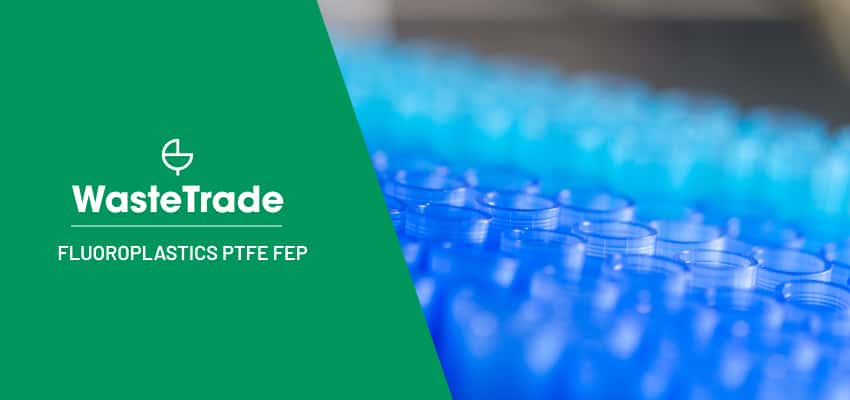Fluoroplastics PTFE FEP Recycling

Properties of Fluoroplastics

Fluoroplastics PTFE FEP are a group of high-performance plastics with unique properties that make them suitable for various applications across industries. PTFE (polytetrafluoroethylene) is a thermoplastic polymer with excellent chemical resistance, high-temperature resistance, and low friction properties. It is commonly known as Teflon and is used in applications where high-performance, low-friction materials are required, such as in the aerospace and automotive industries.
FEP (fluorinated ethylene propylene) is a copolymer of hexafluoropropylene and tetrafluoroethylene with similar properties to PTFE. It has good chemical resistance, excellent electrical properties, and can be processed using conventional thermoplastic methods such as injection molding and extrusion. FEP is commonly used in the medical, pharmaceutical, and food industries.
Applications of Fluoroplastics

PTFE and FEP have numerous applications across various industries. In the aerospace industry, PTFE is used to make seals, bearings, and gaskets due to its high-temperature resistance and low friction properties. In the automotive industry, PTFE is used to make wire and cable insulation, as well as for seals and gaskets. In the medical industry, FEP is used to make catheters, tubing, and other medical devices due to its biocompatibility and chemical resistance. In the food industry, FEP is used to make non-stick coatings for cooking equipment, such as frying pans and baking trays.
Fluoroplastics Recyclability
PTFE and FEP are technically recyclable, but the recycling process can be challenging due to their chemical properties and the low volume of waste generated. However, companies are developing new technologies to recycle PTFE and FEP, which could reduce waste and create a more sustainable future.
The recycling process for PTFE and FEP typically involves shredding the material into small pieces or powder, then mixing it with virgin PTFE or FEP to create a new product. This process is known as compounding. The mixed material is then extruded, moulded or formed into the desired shape or product.
Due to the unique properties of PTFE and FEP, the recycling process can be complex and require specialised equipment and processes. For instance, PTFE has a high melting point, which can make it difficult to recycle. On the other hand, FEP has a low melting point and can be more easily processed.
Recycling PTFE and FEP can help reduce waste, save resources, and decrease greenhouse gas emissions. By investing in research and development, companies can help reduce waste and create a more sustainable future for these plastics.
Recycle Fluoroplastics PTFE FEP With WasteTrade
WasteTrade provides solutions for businesses seeking to recycle their Fluoroplastics PTFE and FEP waste streams. As a platform that connects businesses with waste management companies, WasteTrade specialises in the recycling of plastics. By registering with WasteTrade, businesses gain access to a wide range of information and resources to better understand the recycling process and make informed decisions. Register with WasteTrade today and discover the best recycling solutions for your PTFE and FEP waste streams.
